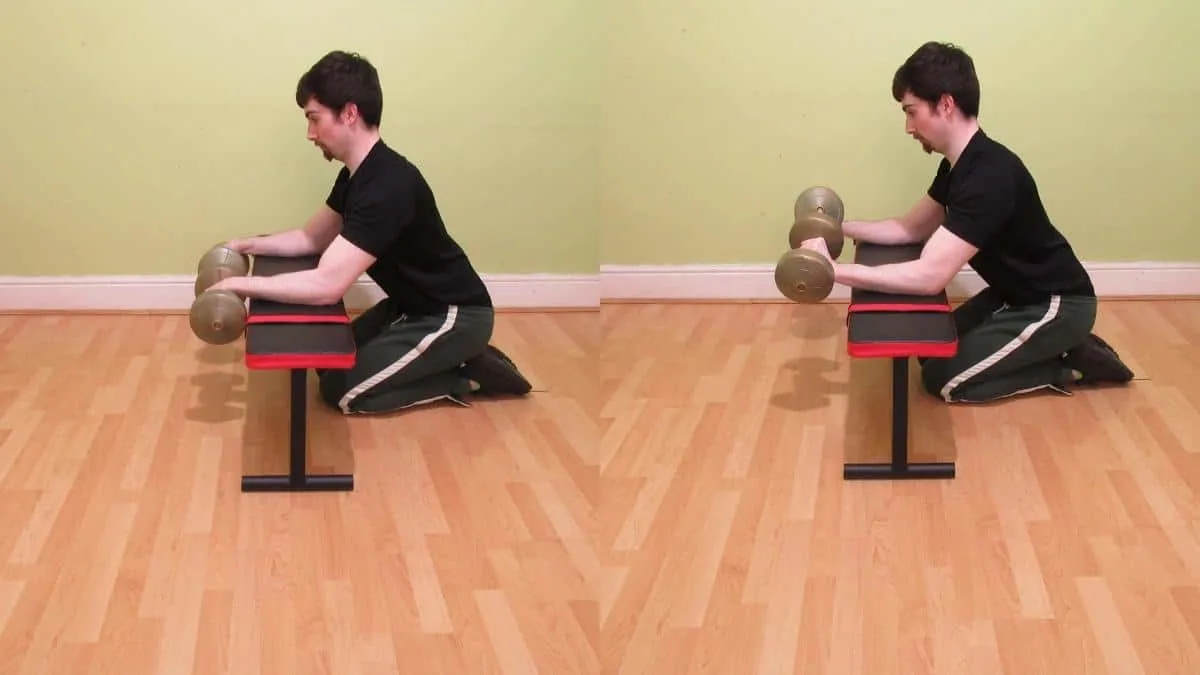No forearm workouts are complete without reverse wrist curls. Most lifters do regular wrist curls for the underside of their forearm and then call it a day, and then they wonder why they have weird looking forearm anatomy.
This guide focuses specifically on the technique, benefits, and mistakes of the dumbbell reverse wrist curl. However, towards the end of the article, I’ll also show you 3 useful alternatives that you can do to work those all-important forearm extensor muscles.
Related post: dumbbell forearm exercises
How to do reverse wrist curls
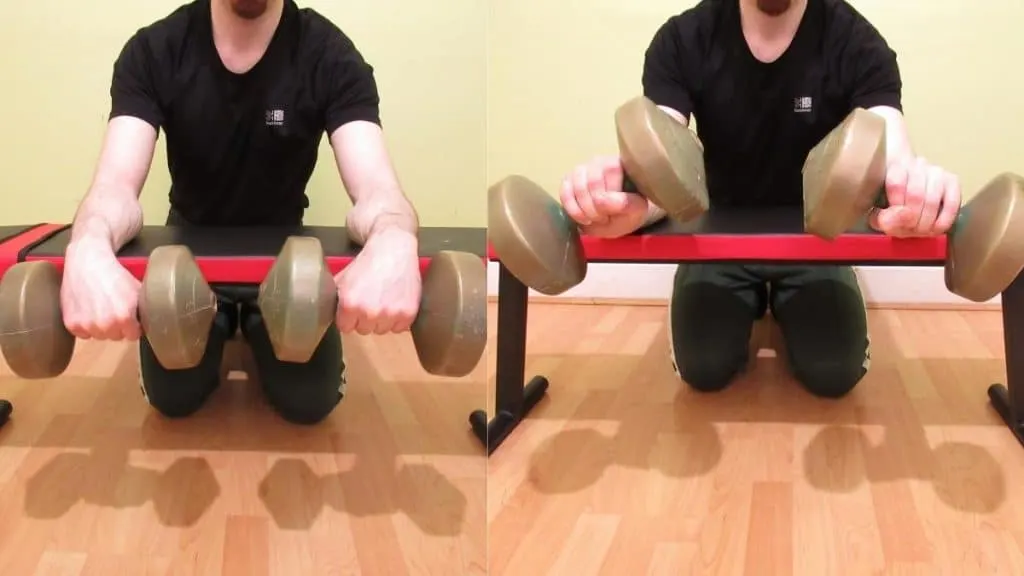
For this demonstration, we’ll be doing reverse wrist curls over a bench. However, you can just as easily do them over your knees instead.
- Hold 2 light dumbbells in your hands and kneel next to a weight bench.
- Rest the underside of your forearms on the bench padding and let your hands hang off the edge.
- Lower the weights towards the floor by bending your wrists.
- Keep going until you feel a nice stretch in the top of your forearms.
- Immediately bring the weights back up by extending your wrists.
- Contract your wrists at the top of the rep (try and raise your hands slightly higher than your forearms) and then repeat for 2-4 sets of 15-20 reps.
Reverse wrist curls muscles worked
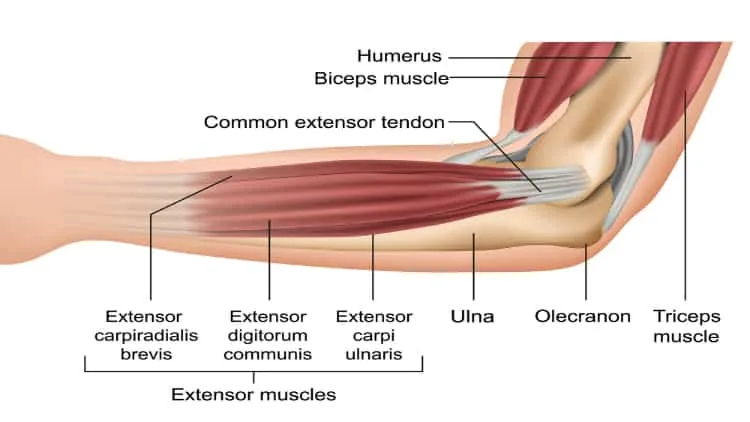
The dumbbell reverse wrist curl mainly works the muscles of the posterior forearm, which are collectively called the wrist or forearm extensors. They move the muscles of your wrist, hand, and forearm upwards, and they and include the extensor carpi radialis brevis, the extensor carpi ulnaris, the extensor digiti minimi, and the extensor digitorum.
Dumbbell reverse wrist curl mistakes
Reverse forearm curls are a remarkably simple isolation exercise, which is to say that you only need to move your wrists a few inches to complete a rep. Yet, some lifters still use sloppy form. So if you want to get the most from this exercise, make sure to avoid these 3 terrible but all too common mistakes.
Lifting too heavy
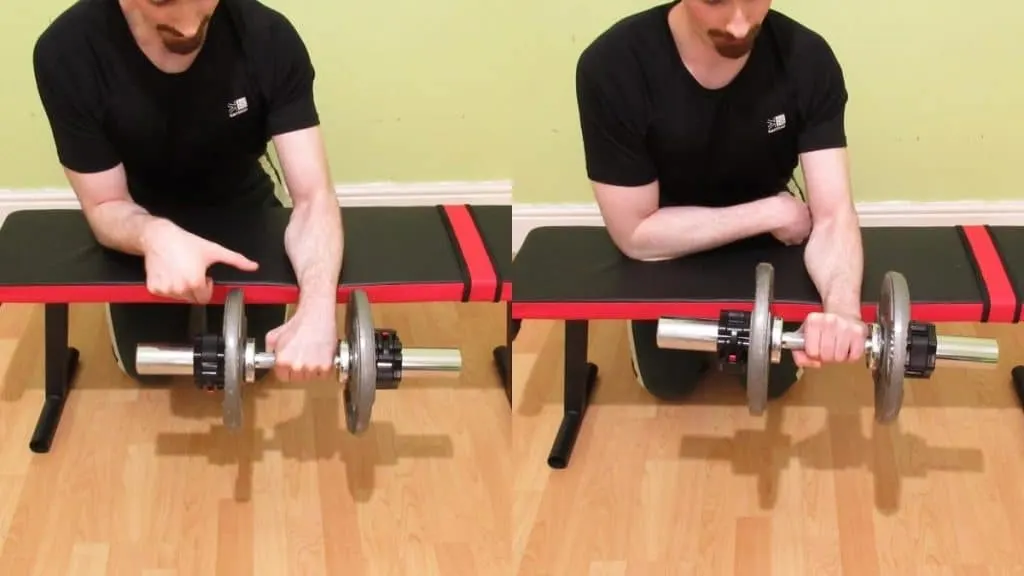
Lifting heavy requires that you use low reps. And while this training style can work wonders for your squat strength, it won’t work for your forearms, and it may eventually cause a wrist injury if you keep it up.
The range of motion (ROM) on a reverse grip wrist curl is tiny. So to get sufficient time under tension, you practically have no choice but to use high reps.
This high rep training style actually makes perfect sense physiologically speaking because the forearm extensors are very slow-twitch compared to more explosive muscles like your chest and triceps. As such, they actually respond better and grow more from high reps than low reps.
Sets of 15-20 are ideal. But don’t be afraid to shoot for 30 reps if your forearms have the endurance for it.
Shortcutting the range of motion
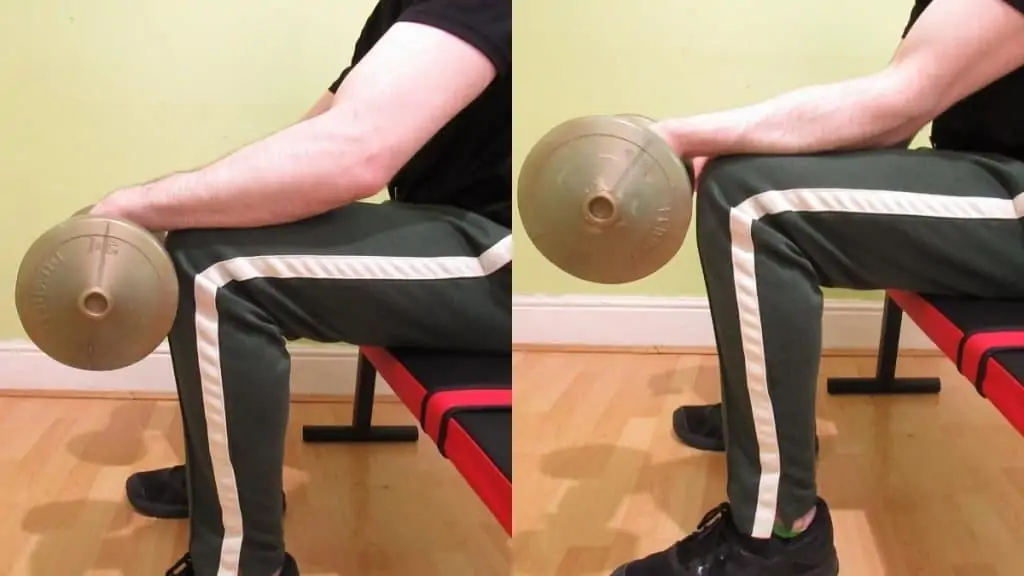
The reverse wrist curl has a small ROM as it is. The last thing that you want to do is to shorten it by banging out half reps.
Instead, make sure that you get a full stretch and contraction from each and every rep.
Lower the weight until you feel the tops of your forearms getting stretched (just don’t overdo it). And on the way up, raise your hands above your forearms so that your extensors receive the strongest possible contraction.
While training hard is undoubtedly important, proper form is the number one factor that determines the quality of your results. So don’t sleep on it!
Besides, when you lift with good technique, you can get great gains from fewer sets because each rep stimulates more muscle growth by recruiting extra fibers.
Using momentum
Don’t just drop the weights during the dumbbell reverse wrist curl. Let your forearm extensors take the strain. Try and slow down your eccentrics at first so that you can understand exactly what it’s like to completely control each rep.
Using momentum, on the other hand, robs your muscles of tension and leads to injuries by placing excessive stress on your joints and vulnerable connective tissue.
Read more: baseball forearm workouts
Dumbbell reverse wrist curl benefits
You won’t see the reverse forearm curl on the front of fitness magazines or in celebrity workouts. However, this unassuming exercise has some very underappreciated benefits that you might not have considered.
Proportional forearms
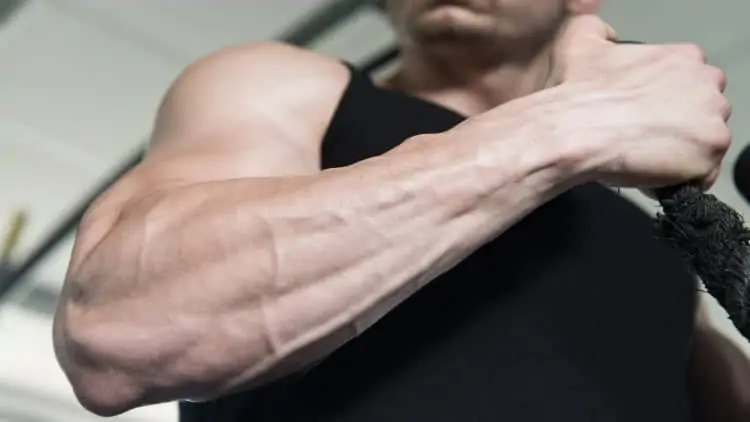
The forearm flexors receive lots of stimulation from bicep curls, and as such, they’re usually more developed than the forearm extensors. This leads to an imbalance in lower arm strength, but it can also make your forearms look out of proportion if the gulf in development is significant.
Therefore, it’s wise to prioritise reverse wrist curls. Do them before the regular barbell wrist curl when you’re at your freshest so that they can catch up in development with your likely dominant flexors.
Don’t forget to do brachioradialis exercises as well if you want complete lower arm development.
Greater strength on compound lifts
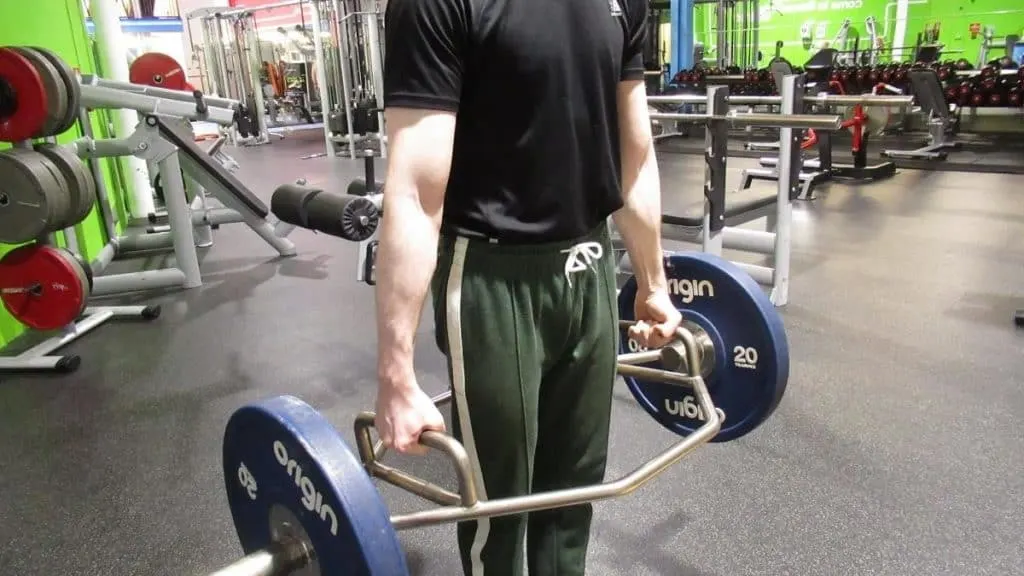
Many lifters resort to lifting straps because their forearms are the weak link in their kinetic chain due to a lack of grip strength or grip endurance. [1] And while there’s nothing inherently wrong with using straps, the increase in usage over the years does point to a lack of attention for forearm-specific training.
Direct grip training is your best bet. But the reverse forearm curl is a complementary exercise to standard grip work because by strengthening your extensors, which are naturally a small muscle, they’re less likely to give out prematurely during compound lifts like deadlifts and rows.
Reduced injury risk
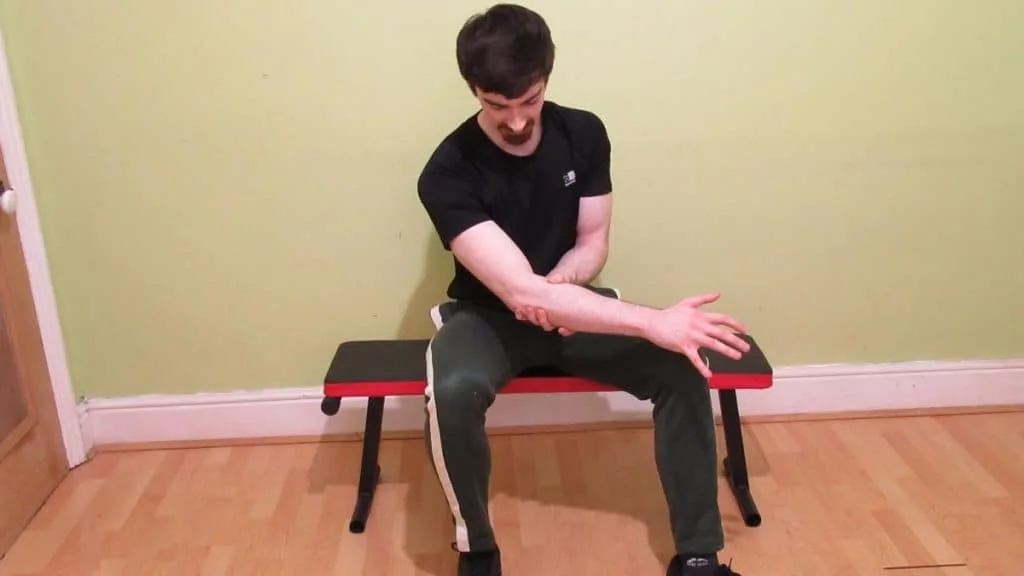
Training a muscle with weights is one of the most effective methods for reducing your injury risk because by training it, you naturally make the muscle accustomed to handling tension that might otherwise cause strains and injuries. [2]
So even if you can’t get to the gym, it’s worth buying a cheap dumbbell set and doing the reverse grip wrist curl over a table or desk to protect your forearms against injury.
Dumbbell reverse wrist curl alternatives

Palms down dumbbell wrist curls are useful for building proportional forearms. But there are plenty of other alternatives that you can try to add more variety to your workout routine.
- Cable wrist curl
- Plate wrist curl
- Single dumbbell wrist curl
- Standing wrist curl
- Wrist roller
- Wrist twist exercise
Barbell reverse wrist curl

The barbell reverse wrist curl is much the same as the dumbbell variation, except that it’s more efficient because the bar enables you to work both your arms simultaneously.
The downside is that your stronger forearm may naturally take over, which could result in muscle imbalances over time. So be sure to keep an eye on your form to ensure that you’re using both arms equally.
If using a regular bar hurts your wrists like it does for some people, then you can also give the EZ bar wrist curl a go to take advantage of the semi-pronated grips.
Standing reverse wrist curl

The standing reverse wrist curl is a very convenient exercise. You don’t have to wait for a bench to become available, and the setup is much smoother than that of the regular reverse wrist curl done over a bench. So if you train in a busy gym, this drill is your best bet.
Behind the back wrist curl

The behind the back wrist curl works the forearm flexors and is one of my all-time favourite moves because it forces you to use a good mind-muscle connection seen as you can’t see the weight in action.
Read more: resistance band forearm exercises
The verdict on reverse forearm curls
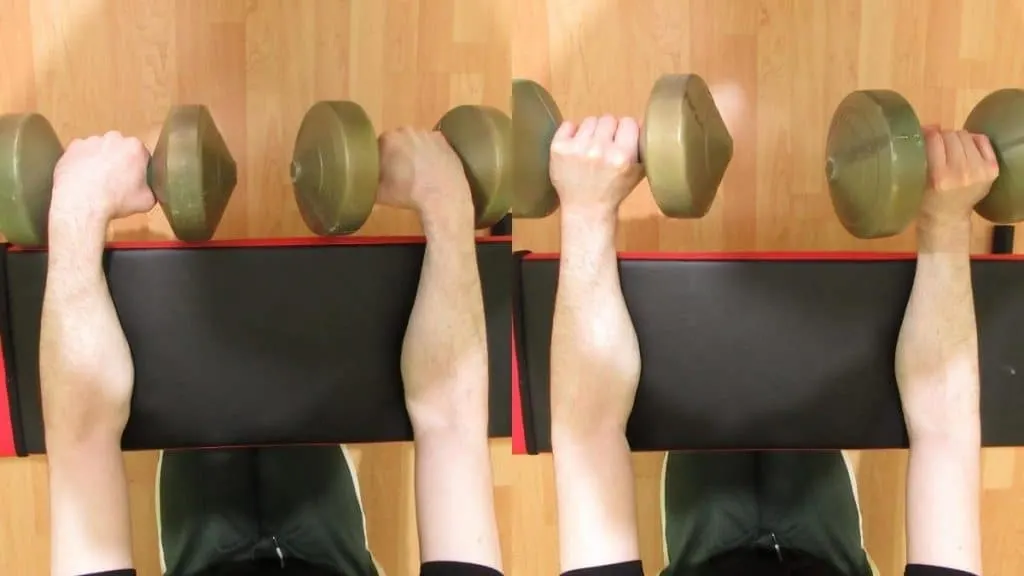
Reverse forearm curls should be a staple exercise in every arm workout. While you might think that compound exercises are enough, you could say the same about your biceps, but most people wouldn’t give up curls.
And that’s because exercises like reverse wrist curls ensure that the target muscle is always the point of failure, which leads to optimal muscle growth when using high reps (which you should be doing on wrist curls). [3]
So overall, the dumbbell reverse wrist curl is a very beneficial exercise because it allows you to work both your arms independently, which in turn leads to more equal development rather than muscular imbalances.
References
- Berg, O. K., Nyberg, S. K., Windedal, T. M., & Wang, E. (2018). Maximal strength training-induced improvements in forearm work efficiency are associated with reduced blood flow. American Journal of Physiology-Heart and Circulatory Physiology, 314(4), H853–H862. https://doi.org/10.1152/ajpheart.00435.2017
- Fleck, S. J., & Falkel, J. E. (1986). Value of Resistance Training for the Reduction of Sports Injuries. Sports Medicine, 3(1), 61–68. https://doi.org/10.2165/00007256-198603010-00006
- Lasevicius, T., Schoenfeld, B. J., Silva-Batista, C., Barros, T. S., Aihara, A. Y., Brendon, H., Longo, A. R., Tricoli, V., Peres, B. A., & Teixeira, E. L. (2019). Muscle Failure Promotes Greater Muscle Hypertrophy in Low-Load but Not in High-Load Resistance Training. Journal of Strength and Conditioning Research, Publish Ahead of Print. https://doi.org/10.1519/jsc.0000000000003454

